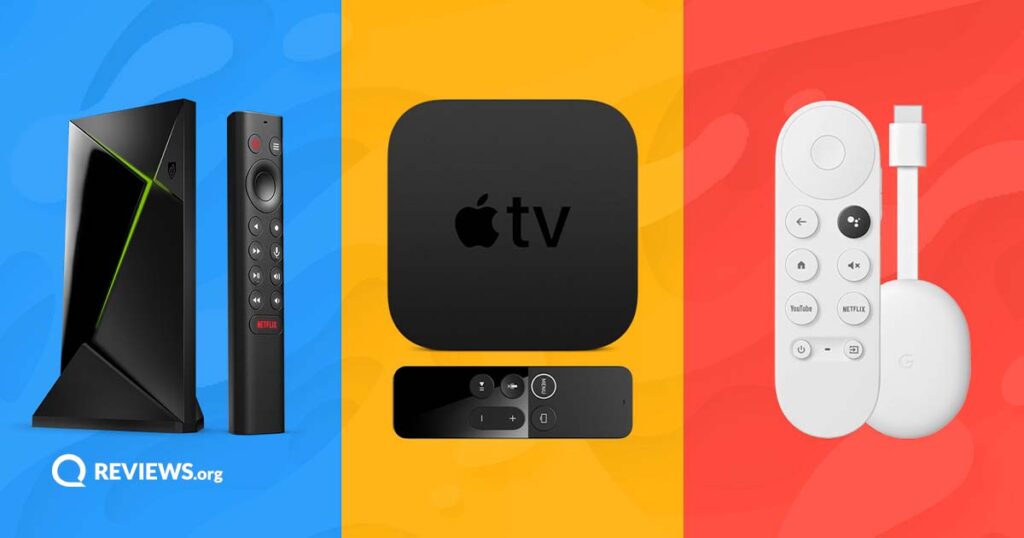T-Mobile, Verizon, and AT&T all provide nationwide network coverage—but one may be better for you depending on your area.
Best Cell Phone Coverage: Which Mobile Network Has the Best Coverage?
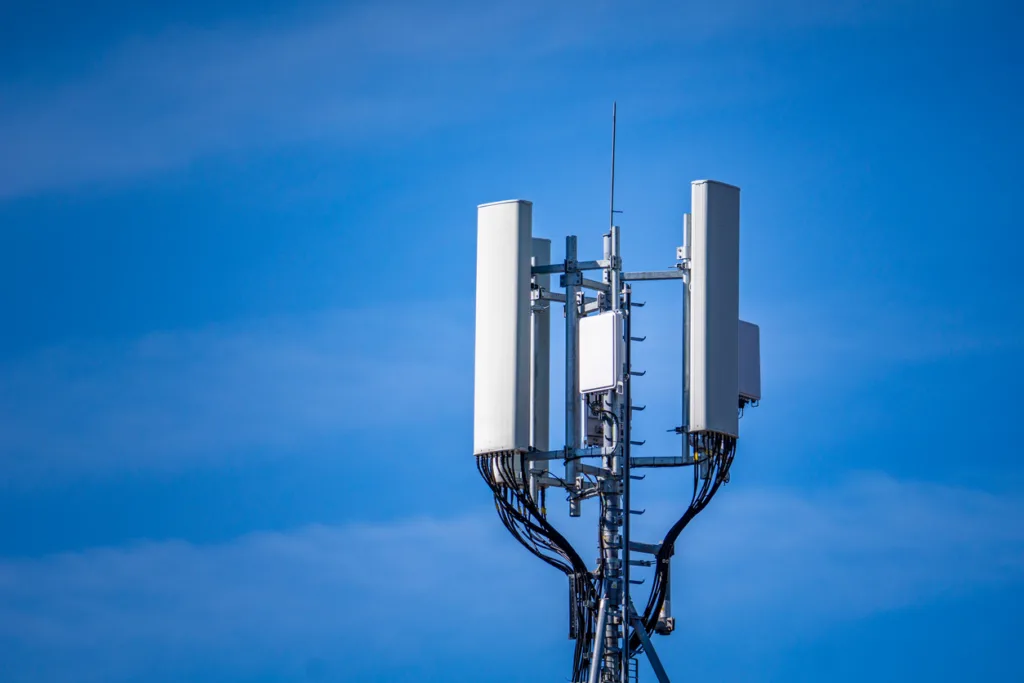
The best carrier is the one that offers the most reliable service in your area.
Even if the Big Three cellular networks say they cover 99% of the U.S. population, we all know that is no guarantee for a flawless connection. The truth is, AT&T, T-Mobile, and Verizon have widespread coverage, but quality of this coverage varies from block to block.
So with some healthy skepticism, I studied the best cell phone plans, read industry reports, and looked over Reviews.org’s proprietary coverage maps to find the strengths of each network.
- Best coverage: Verizon offers widespread 4G LTE and 5G coverage in both major cities and rural areas, making it a versatile carrier that delivers fast service where you need it.
- Best 5G coverage: T-Mobile offers the fastest speeds in most metro areas—an easy choice for city dwellers who use lots of data each month.
- Best performance: AT&T shines above the competition when it comes to reliability and continuous access to its network.
One carrier may meet your needs better than the other, so keep scrolling for a closer look into each one and how they fare on network quality.
Why you can trust us
At Reviews.org, our team takes its editorial independence seriously. We may earn money when readers click affiliate links, but we don't work for our brand partners, and they don’t approve our pieces before publication. To learn more, visit our About us page.
Share your experience and rate your mobile carrier
Your feedback helps others find the right cell phone plan. Whether your experience was great, frustrating, or somewhere in between, we want to hear about it.
Verizon: Best coverage
Source: Verizon
Verizon delivers reliable connectivity with its extensive 4G LTE coverage in both rural and urban areas. This means that you can truly depend on it wherever you go, since the last thing anyone needs is a service that cuts out when your car breaks down far from home and you need to call someone for a ride.
Industry reports also back this up: Verizon ranks the highest for network quality in the majority of U.S. regions in the J.D. Power Wireless Network Quality Performance Study, which evaluates customer satisfaction when taking calls, sending texts, or surfing the internet. Verizon also won the Coverage Experience award in OpenSignal’s Mobile Network Experience Report, which focuses on coverage in more populated areas—a solid indicator of Verizon’s coverage in places where people live, work, and travel.
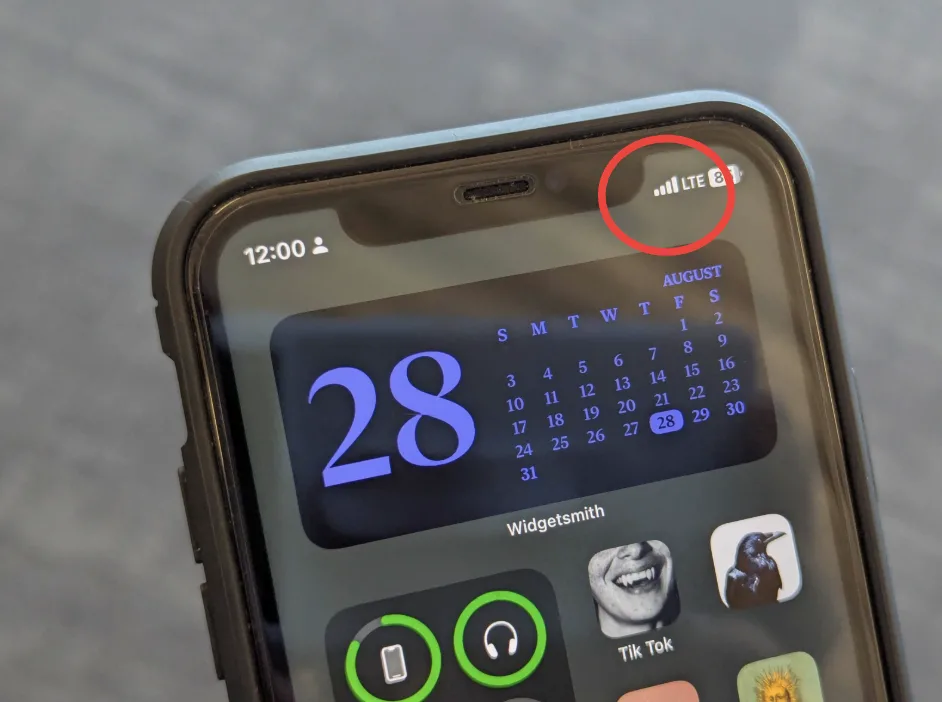
Brenna is on a Verizon plan where she connects to Verizon’s widespread 4G LTE network. Photo by Brenna Elieson
That being said, Verizon’s faster 5G and 5G Ultra Wideband service has a much smaller footprint, with availability primarily in cities rather than rural areas. Verizon customers in a 5G coverage area experience the fastest speeds and the lowest latency, which results in a better all-round experience. Since Verizon’s 4G network is larger, Verizon customers may have reduced access to fast speeds compared to a T-Mobile customer.
Verizon mobile coverage map
Check if Verizon offers coverage in your area by checking the 5G or 4G boxes.

T-Mobile: Fastest 5G speeds
If speed is your highest priority, T-Mobile’s 5G network has got you covered. I’m a T-Mobile customer myself, and in my neighborhood, I can access fast speeds with T-Mobile 5G Ultra Capacity (which is indicated by the small “5G UC” label in the top status bar on my smartphone).
T-Mobile 5G UC is made up of mid-band or high-band (mmWave) frequencies, so I can carry out high-bandwidth activities with no delays, such as streaming HD videos or sending large files through email. However, T-Mobile’s 5G UC network is primarily in cities with bigger populations, with the majority of less populated cities covered by T-Mobile’s 5G extended range network. Most customers experience speeds around 89Mbps to 418Mbps.
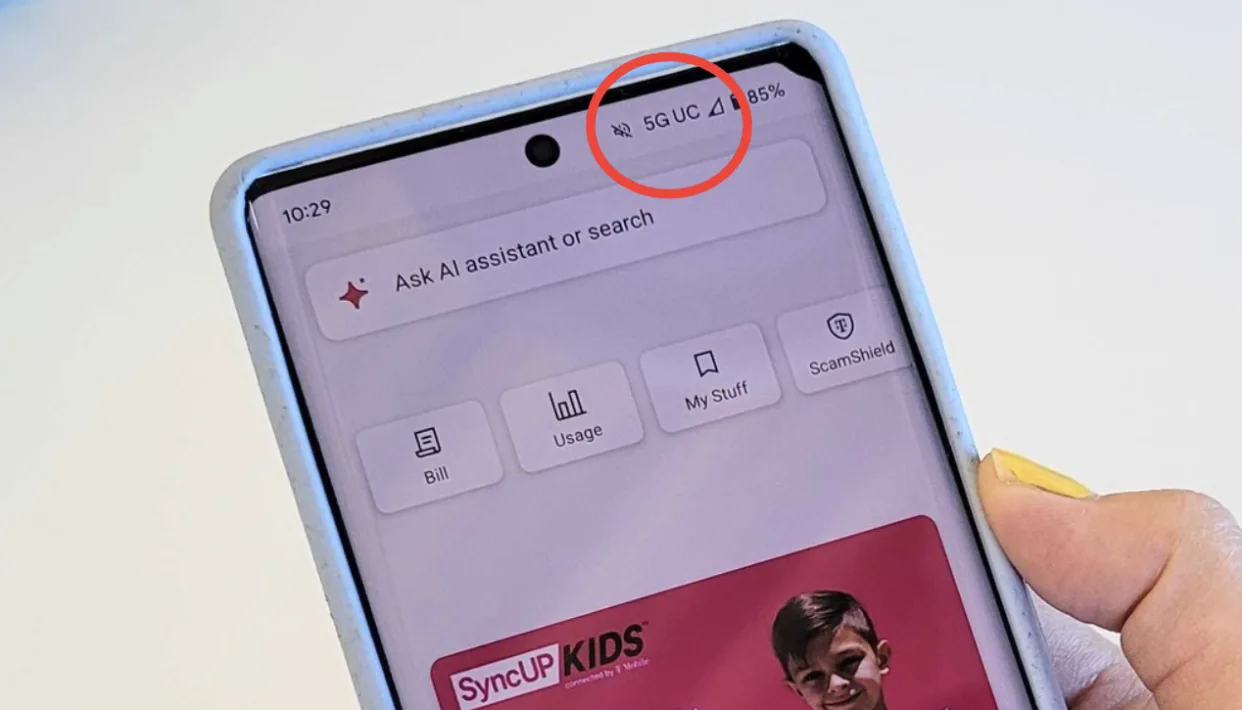
My phone indicates if I’m connected to T-Mobile’s 5G UC network in the top status bar. Photo by Kelly Huh
T-Mobile’s fast speeds are verified by the RootMetrics State of the Mobile Union Report, which carries out over 3 million tests on the Big Three networks. T-Mobile is the only network to record median download speeds of at least 100Mbps in all tested markets and an overall median download speed of 371Mbps. In the OpenSignal Mobile Network Experience Report, T-Mobile also ranks the highest for both 5G Availability and 5G Coverage Experience, showing the carrier’s leading dominance in the 5G race.
T-Mobile now offers T-Satellite, a satellite-based service that connects your smartphone to low-earth orbit Starlink satellites. The carrier also rolled out 5G Advanced, an upgraded network technology that integrates AI for faster speeds and lower latency.
T-Mobile mobile coverage map
T-Mobile coverage map showing 4G LTE and 5G coverage

AT&T: Most reliable network
AT&T offers the most reliable network. Even if Verizon wins on overall coverage and T-Mobile has the fastest 5G speeds, that doesn’t mean that once you get connected, you stay connected. AT&T demonstrates greater reliability than its competitors according to the RootMetrics’ Overall RootScore Award and Reliability RootScore Award, which means that when it comes to data usage, calls, and texts, AT&T performs better in more states. While RootMetrics reports AT&T’s median download speeds are lower than T-Mobile and Verizon, the carrier actually delivers better reliability while downloading and uploading files.
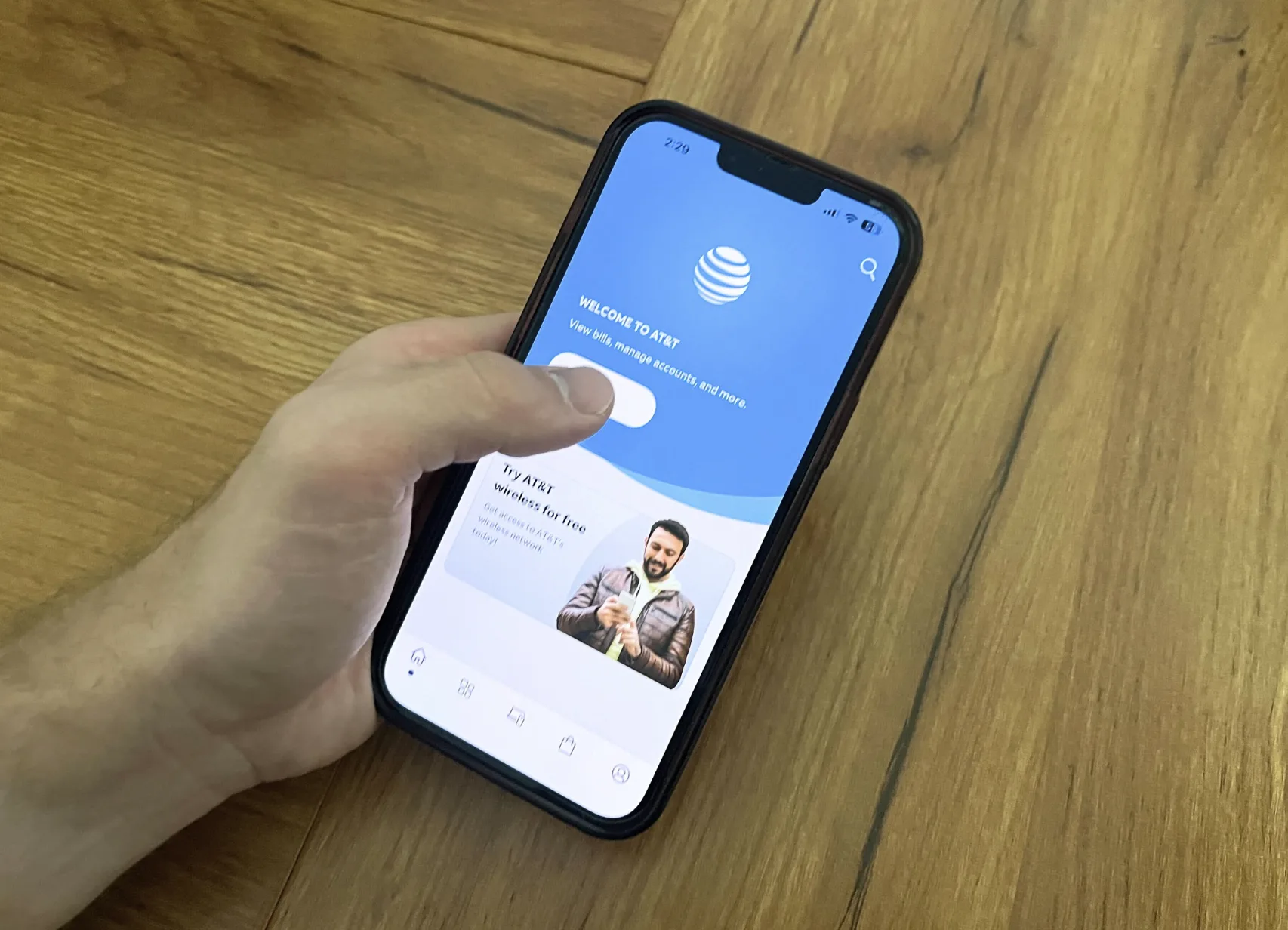
AT&T delivers reliable coverage, especially indoors. Photo by Cai Crawford
AT&T also takes first place for Availability in the OpenSignal Mobile Network Experience Report, which determines how long a person stays connected to AT&T’s network in places they frequent. It’s also a strong measure of the quality of indoor coverage, since most people are inside when they use their phones.
Even though all unlimited plans have access to AT&T’s 5G network, you can add AT&T Turbo for an extra $7 per month to get upgraded to performance data, sometimes even during network congestion. This boost is especially useful for improving performance for mobile games, live streams, and video calls.
AT&T will fix any network interruptions and offer a credit for a full day of service. You’re eligible for the guarantee if you experience downtime for 60 minutes or longer caused by a single incident impacting 10 or more towers.
AT&T mobile coverage map
AT&T coverage map showing 4G LTE and 5G coverage

How did we pick the best coverage?
At its core, coverage measures where a carrier’s cellular network physically covers a geographical area. However, it can also mean whether you can get a signal while you’re inside that area or whether the service is as fast and reliable as you expect it to be. I focused my research on the Big Three carrier networks because they have the greatest market share and widest coverage, although there are smaller networks. I also leaned heavily on large-scale independent studies like the OpenSignal Mobile Network Experience Report, RootMetrics State of the Mobile Union Report, and the J.D. Power 2025 U.S. Wireless Network Quality Performance Study. Learn more about how we review on our Methodology page.
Get the same national cellular coverage for half the price
You can get a more affordable plan through an MVNO, or a Mobile Virtual Network Operator, that offers essentially the same coverage as AT&T, T-Mobile, and Verizon. MVNO carriers offer services on the same cell towers as the main networks but offer cheaper plans, as they don’t pay to own and operate the infrastructure. These ones have excellent coverage:
What is 5G in simple words?
5G stands for “fifth generation” and it's the newest standard or technology for wireless networks, coming into wide use in 2019 and 2020. When a plan says it includes 5G, it means you get access to the network’s fastest speeds, lowest latency, and greatest capacity.
Just like 4G and 4G LTE—the technology’s predecessor—a 5G network operates over radio frequencies that send signals to phones. But 5G networks operate over higher-frequency radio spectrum that previously wasn’t as widely used for commercial purposes, creating a wider amount of network bandwidth to allow for faster and more reliable connections.
But 5G signals also have a shorter range, and the high cost of 5G buildout means that it has a smaller nationwide footprint than 4G. So if you want to experience the fastest speeds, you need to be primarily in an area that gets 5G.
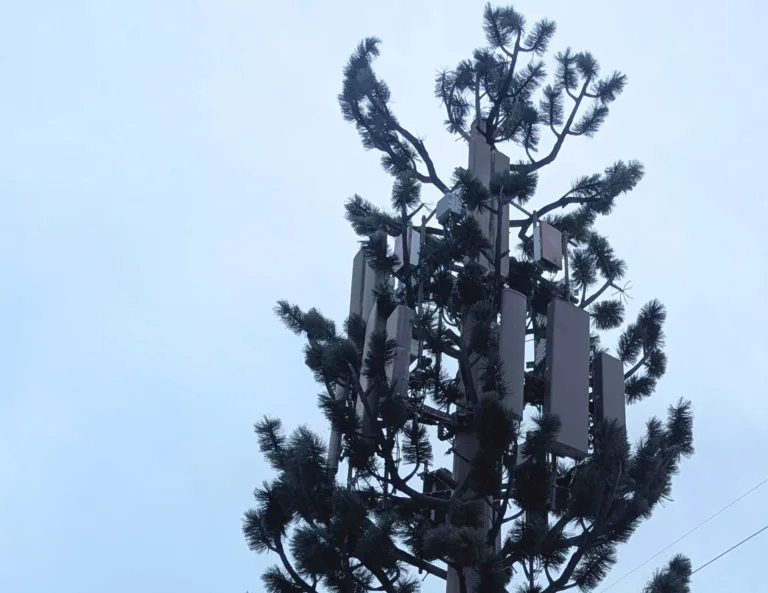
A photo of a disguised 5G tower in my neighborhood. Photo by Kelly Huh
How can you get 5G—and what type of 5G can you get?
Cell phone carriers like AT&T, T-Mobile, and Verizon all maintain their own 5G networks that they invested billions of dollars to build. But each network varies in size, and the frequency range of each also deliver varying data speeds and latency. Also, keep in mind that you need a 5G-compatible phone in order to connect to 5G.
There are different kinds of frequencies that 5G networks can be made up of:
- High-band millimeter wave (mmWave): This delivers fast speeds in short ranges, mostly available in densely-populated urban areas and contained venues like sports stadiums.
- Mid-band/C-band: Delivers fast speeds across a larger range, but not as fast as high-band
- Low-band: Basically a souped-up version of 4G, this delivers moderately fast speeds that can travel the farthest out of the three bands.
Cell phone carriers generally have a large low-band 5G network, and less mid-band or high-band. In some areas where 5G is not available, your phone will connect to 4G LTE instead–which delivers slower speeds. For more details, check out our What Is 5G? article.
How to deal with dead spots in coverage
While there is no carrier that completely eliminates dead spots, there are some things you can do to stay connected when you don’t get service:
Switch to the best network for your specific geographic region
The J.D. Power 2025 U.S. Wireless Network Quality Performance Study is my go-to resource for finding out which carrier is actually the best in your area without the marketing lingo. Across the country, Verizon customers in the survey experience the least problems in their network quality, but in the Southwest, it’s a tie between AT&T and Verizon. And in the West, T-Mobile ranks the highest.
Move to a window
Distance, buildings, walls, mountains, and congestion can cause interference that may stop you from connecting successfully to the nearest cell tower. While you can’t avoid all physical obstructions, using your phone in an area of your home that has the thinnest walls and clearest line of sight to a cell tower might improve your connection.
Use Wi-Fi calling and internet-based apps to send messages
As someone who lives in a basement, the red “failed to send message” error message is one of my most common notifications. I’m convinced this is largely to do with my phone hardware rather than T-Mobile’s network (since no one else in my family experiences this). Nevertheless, it’s still annoying. When this happens, I just connect to Wi-Fi where possible and send my messages via Messenger.
Best cell phone coverage FAQ
Verizon offers the best coverage overall. The carrier gets several awards for its reliable 4G LTE coverage available in both urban and rural areas.
For the fastest speeds and lowest latency, it’s better to connect to 5G than 4G. However, 4G still delivers fast speeds if you want to stream shows, scroll through social media, or browse the web.
In terms of coverage and network quality, Verizon is a better choice than T-Mobile throughout most of the U.S., with the exception of the West region, where T-Mobile offers a better service.
Related Articles



